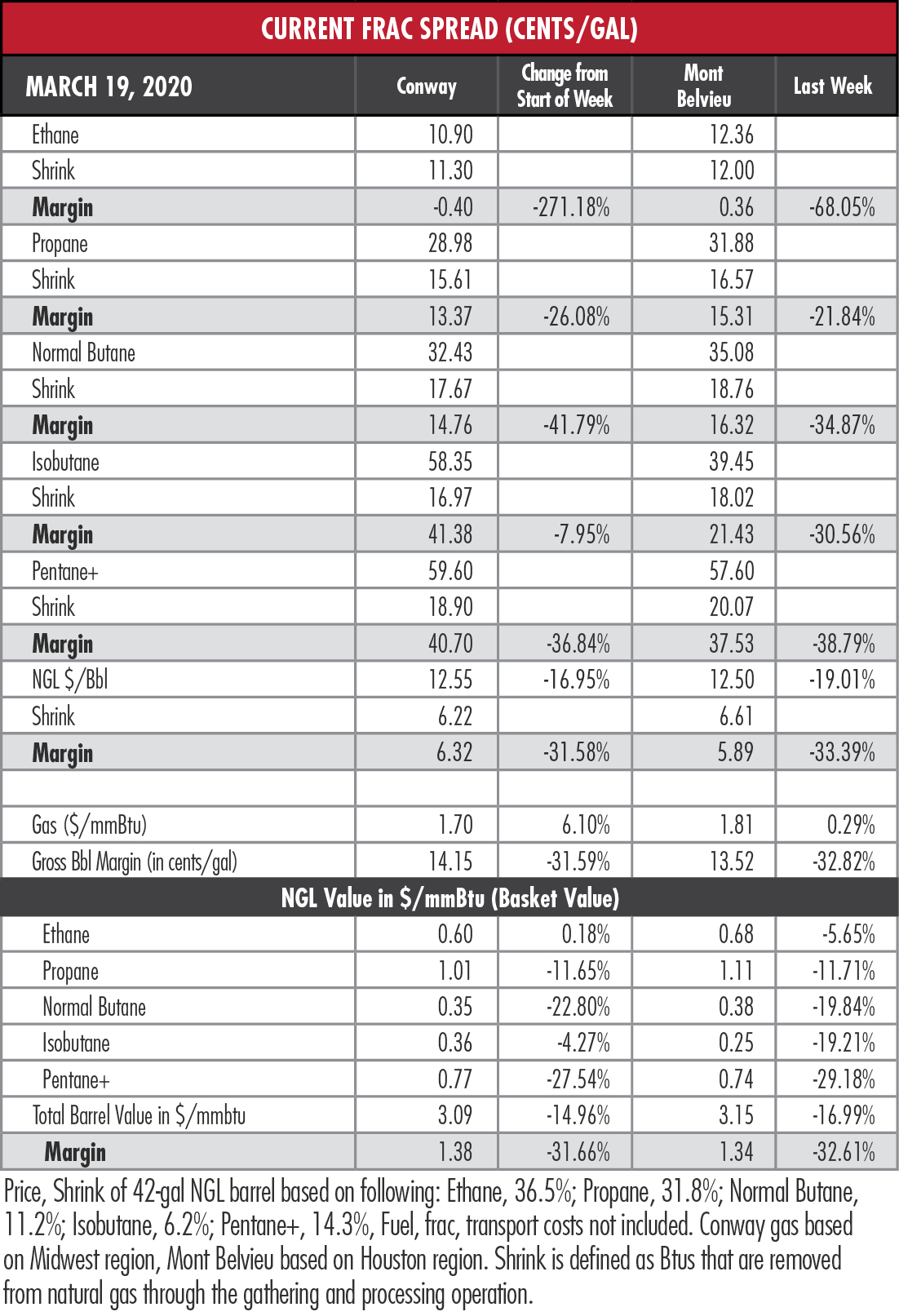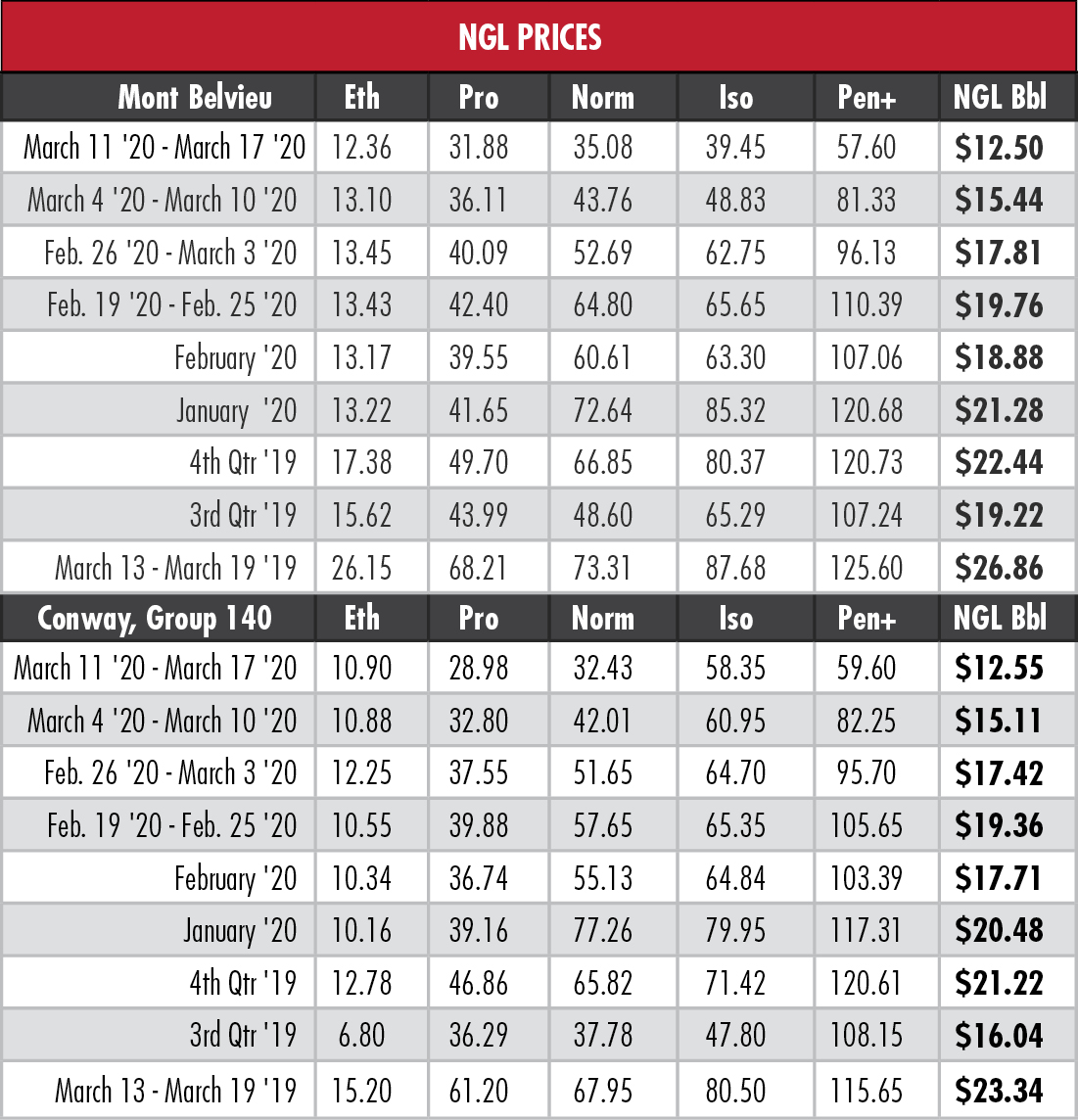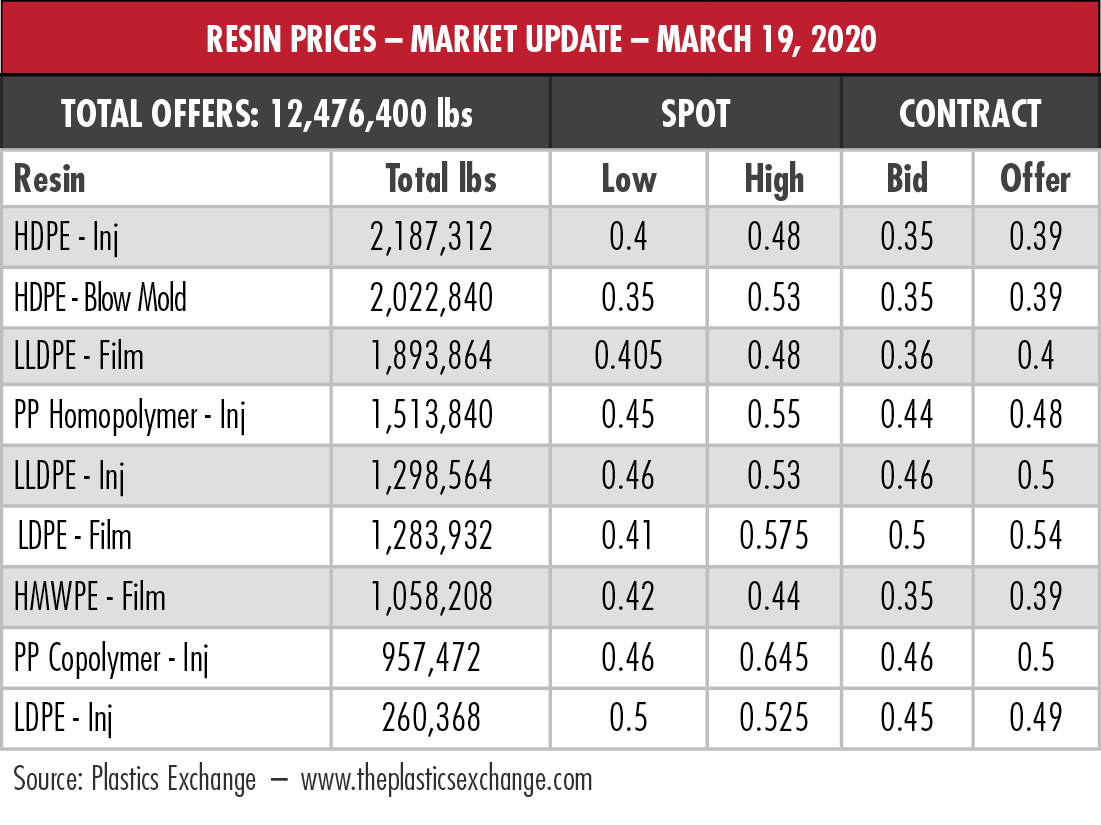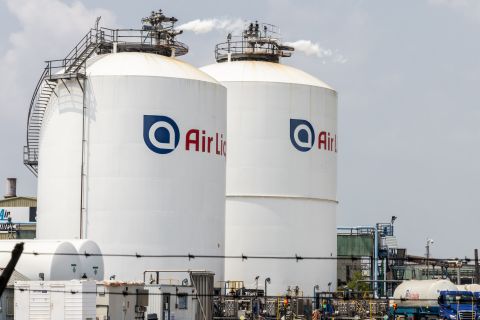
(Source: HartEnergy.com, Shutterstock.com)
Merely describing last week as the worst ever for NGL prices doesn’t seem to do the occasion justice. A declaration of this magnitude requires us to summon our collective inner Homer Simpson and pronounce the week as the worst ever for NGL prices so far.
The previous low of the Mont Belvieu, Texas, hypothetical NGL barrel for the five-day tracking period of Jan. 13-19, 2016, was 13% higher than last week’s close of $12.50. The most recent figures represent the first time that Mont Belvieu has been below both $14 and $13.
During that period and the following week in 2016, the price of the Conway, Kan., barrel slipped below $14 twice, but never touched last week’s record low of $13.12.
The immediate strength shown by natural gas prices has faded, with the U.S. benchmark Henry Hub price dropping to a four-year low on March 18. However, during the five-day tracking period that ended March 17, prices rose 1 cent/MMBtu and that—combined with steeply falling NGL prices—was enough to crush margins. The Mont Belvieu barrel alone suffered a 33.4% hit.
In the short run, U.S. natural gas supply and demand are out of balance as a result of warm weather, high production levels and a weakening economy, said EnVantage Inc. in a recent report. There will be a rebalancing, of course, but no time soon.
“We would expect a renewed downward trajectory of the front end of the price curve with an ultimate rally further out the price curve in the next few months,” the analysts said. “The problem is that the visibility near term future is very, very, murky.”



Ethane prices, tied to natural gas prices, slid 5.6% last week at Mont Belvieu—a modest decrease compared to its sister NGL. Of concern, EnVantage said, are export economics. U.S. ethane competes abroad with oil-based naphtha. When the price of Brent crude oil falls below $35 per barrel (bbl), U.S. ethane producers struggle to compete against naphtha producers in other countries.
Brent dropped below $35 on March 12 and has not closed above that mark since. At mid-morning on March 19, the price was $27.18/bbl.
The drop in Brent also puts U.S. propane exports in peril.
“Looking forward, our biggest fear is that propane exports from the Gulf Coast will be at risk due to the collapse in crude prices and the economic slowdown in Asia and Europe,” EnVantage said.
Mont Belvieu propane averaged just below 32 cents a gallon (gal) last week but closed below 29 cents/gal on March 18. The Saudi-Russian oil war means not only more cheap oil on the market but more cheap naphtha which, like ethane, puts U.S. propane at a disadvantage in export markets.
Butane’s one-week 19.8% plunge to 35 cents/gal contrasts with its 73 cents/gal price a year ago and 81 cents/gal two years ago, and is the lowest ever recorded by Hart Energy. (The highest ever recorded was $2.42/gal in July 2008, which in real terms would be $2.91/gal today.)
The end of the winter gasoline-blending season hurt butane but all of the heavy NGL suffered last week and set record lows for Hart Energy’s tables. Mont Belvieu isobutane fell 19.2% to under 40 cents/gal for the first time, and natural gasoline’s 29.2% dive to under 60 cents/gal represented a 54% price cut since the start of the year.
In the week ended March 13, storage of natural gas in the Lower 48 experienced a decrease of 9 billion cubic feet (Bcf), the EIA reported. The EIA figure resulted in a total of 2.034 Tcf. That is 76% above the 1.156 Tcf figure at the same time in 2019 and 16% above the five-year average of 1.753 Tcf.
Recommended Reading
Air Liquide Eyes More Investments as Backlog Grows to $4.8B
2024-02-22 - Air Liquide reported a net profit of €3.08 billion ($US3.33 billion) for 2023, up more than 11% compared to 2022.
Greenbacker Names New CFO, Adds Heads of Infrastructure, Capital Markets
2024-02-02 - Christopher Smith will serve as Greenbacker’s new CFO, and the power and renewable energy asset manager also added positions to head its infrastructure and capital markets efforts.
Bobby Tudor on Capital Access and Oil, Gas Participation in the Energy Transition
2024-04-05 - Bobby Tudor, the founder and CEO of Artemis Energy Partners, says while public companies are generating cash, private equity firms in the upstream business are facing more difficulties raising new funds, in this Hart Energy Exclusive interview.
enCore Energy Appoints Robert Willette as Chief Legal Officer
2024-02-01 - enCore Energy’s new chief legal officer Robert Willette has over 29 years of corporate legal experience.
SunPower Appoints Garzolini as Executive VP, Chief Revenue Officer
2024-03-14 - Tony Garzolini will oversee SunPower’s sales, including the direct, dealer and new homes channels, along with pricing and demand generation.






